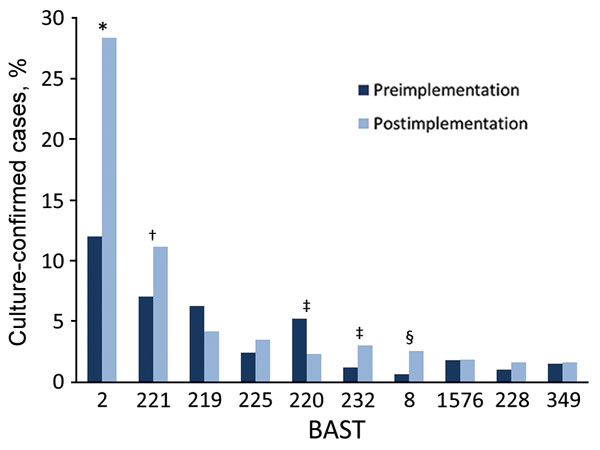Volume 24, Number 4—April 2018
Research
Genomic Surveillance of 4CMenB Vaccine Antigenic Variants among Disease-Causing Neisseria meningitidis Isolates, United Kingdom, 2010–2016
Figure 4

Figure 4. Changes in BAST prevalence before and after Bexsero implementation among invasive meningococcal disease isolates, United Kingdom, 2010–2016. Frequency of BASTs is shown for the period before implementation of Bexsero vaccine, July 2010–August 2015 (dark blue), and after implementation, September 2015–June 2016 (light blue). The most frequently occurring BASTs preimplementation were 2,¶ 221, 219,¶ 220,# 222,¶ 267, 225, 223,# 1576, and 349. The most frequent BASTs postimplementation were 2,¶ 221, 219,¶ 225, 220,# 232,¶ 8,¶ 1576, 228, and 349. *p<0.00001; †p<0.01; ‡p<0.05; §p<0001; ¶BAST contains a potentially cross-reactive match to BAST-1; #BAST contains an exact match to BAST-1. BASTs with significant changes preimplementation and postimplementation were BAST-2 (fHbp 22, NHBA 29, NadA 6, PorA-VR1:5, and PorA-VR2:2), p<0.00001; BAST-221 (25; 7; 0; 5–1; 10–1), p = 0.006; BAST-220 (4; 2; 0; 7–2; 4), p = 0.02; BAST-232 (4; 2; 0; 12–1; 16), p = 0.01; and BAST-8 (22; 29; 121; 5; 2), p = 0.0005. BAST, Bexsero Antigen Sequence Type.